Rui Dinis
Advanced Channel Decomposition Techniques in OTFS: A GSVD Approach for Multi-User Downlink
Apr 25, 2025Abstract:In this paper, we propose a multi-user downlink system for two users based on the orthogonal time frequency space (OTFS) modulation scheme. The design leverages the generalized singular value decomposition (GSVD) of the channels between the base station and the two users, applying precoding and detection matrices based on the right and left singular vectors, respectively. We derive the analytical expressions for three scenarios and present the corresponding simulation results. These results demonstrate that, in terms of bit error rate (BER), the proposed system outperforms the conventional multi-user OTFS system in two scenarios when using minimum mean square error (MMSE) equalizers or precoder, both for perfect channel state information and for a scenario with channel estimation errors. In the third scenario, the design is equivalent to zero-forcing (ZF) precoding at the transmitter.
Streamlined Swift Allocation Strategies for Radio Stripe Networks
Dec 10, 2024Abstract:This paper proposes the use of an access point (AP) selection scheme to improve the total uplink (UL) spectral efficiency (SE) of a radio stripe (RS) network. This scheme optimizes the allocation matrix between the total number of APs' antennas and users' equipment (UEs) while considering two state-of-the-art and two newly proposed equalization approaches: centralized maximum ratio combining (CMRC), centralized optimal sequence linear processing (COSLP), sequential MRC (SMRC), and parallel MRC (PMRC). The optimization problem is solved through a low-complexity and adaptive genetic algorithm (GA) which aims to output an efficient solution for the AP-UE association matrix. We evaluate the proposed schemes in several network scenarios in terms of SE performance, convergence speed, computational complexity, and fronthaul signalling capacity requirements. The COSLP exhibits the best SE performance at the expense of high computational complexity and fronthaul signalling. The SMRC and PMRC are efficient solutions alternatives to the CMRC, improving its computational complexity and convergence speed. Additionally, we assess the adaptability of the MRC schemes for two different instances of network change: when a new randomly located UE must connect to the RS network and when a random UE is removed from it. We have found that in some cases, by reusing the allocation matrix from the original instance as an initial solution, the SMRC and/or the PMRC can significantly boost the optimization performance of the GA-based AP selection scheme.
A Synthetic Dataset for 5G UAV Attacks Based on Observable Network Parameters
Nov 05, 2022

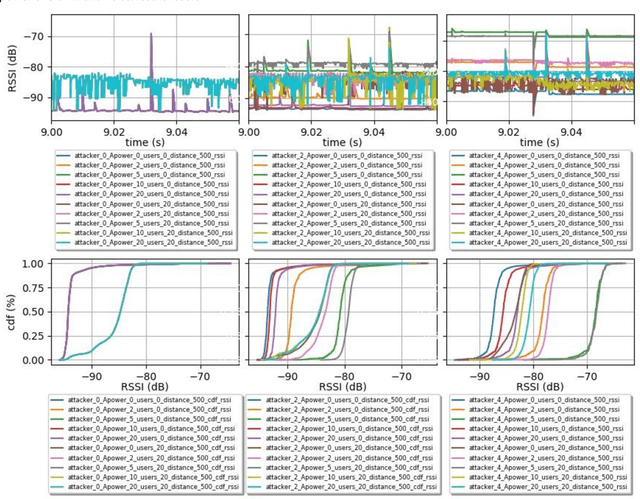
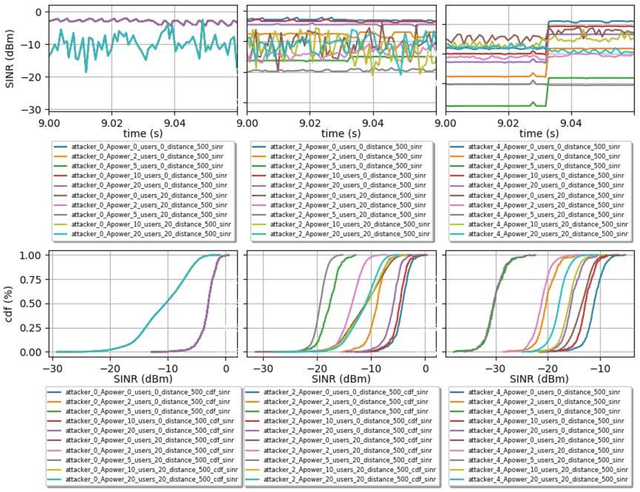
Abstract:Synthetic datasets are beneficial for machine learning researchers due to the possibility of experimenting with new strategies and algorithms in the training and testing phases. These datasets can easily include more scenarios that might be costly to research with real data or can complement and, in some cases, replace real data measurements, depending on the quality of the synthetic data. They can also solve the unbalanced data problem, avoid overfitting, and can be used in training while testing can be done with real data. In this paper, we present, to the best of our knowledge, the first synthetic dataset for Unmanned Aerial Vehicle (UAV) attacks in 5G and beyond networks based on the following key observable network parameters that indicate power levels: the Received Signal Strength Indicator (RSSI) and the Signal to Interference-plus-Noise Ratio (SINR). The main objective of this data is to enable deep network development for UAV communication security. Especially, for algorithm development or the analysis of time-series data applied to UAV attack recognition. Our proposed dataset provides insights into network functionality when static or moving UAV attackers target authenticated UAVs in an urban environment. The dataset also considers the presence and absence of authenticated terrestrial users in the network, which may decrease the deep networks ability to identify attacks. Furthermore, the data provides deeper comprehension of the metrics available in the 5G physical and MAC layers for machine learning and statistics research. The dataset will available at link archive-beta.ics.uci.edu
Accurate and Reliable Methods for 5G UAV Jamming Identification With Calibrated Uncertainty
Nov 05, 2022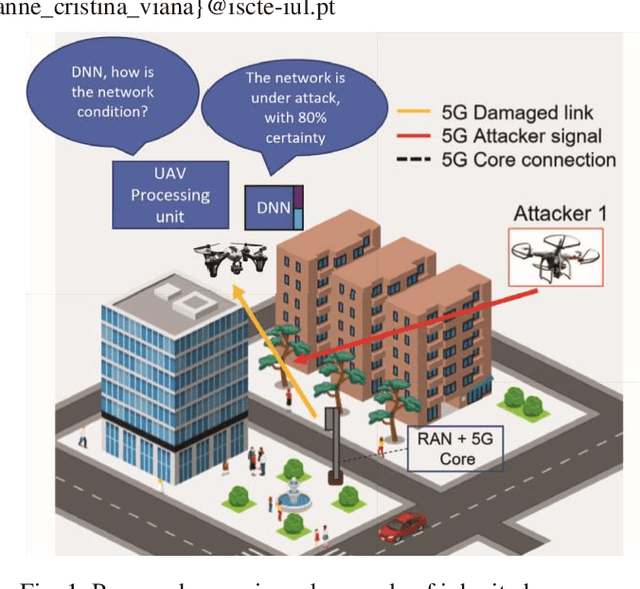
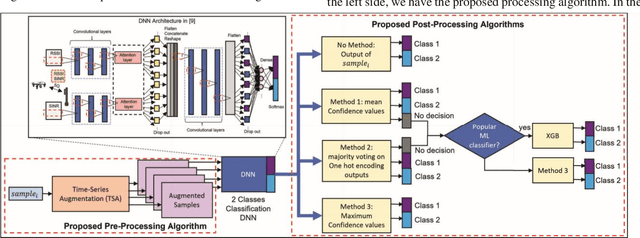
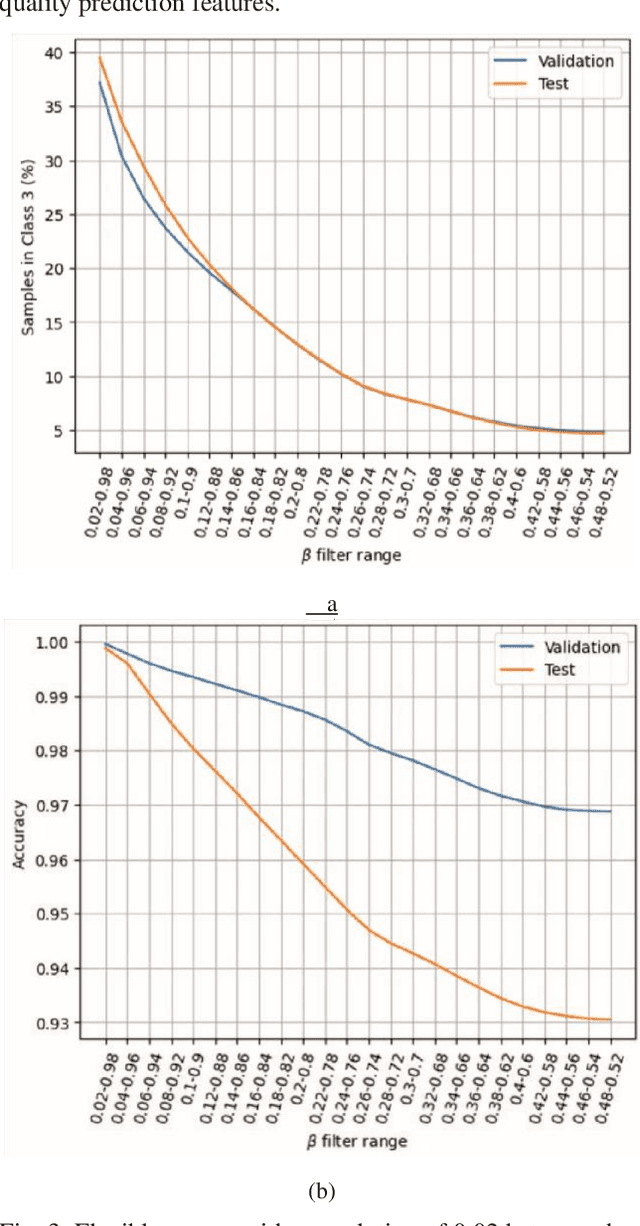
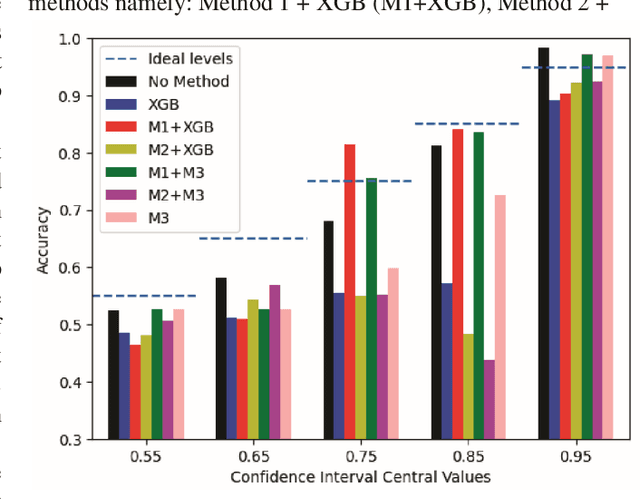
Abstract:Only increasing accuracy without considering uncertainty may negatively impact Deep Neural Network (DNN) decision-making and decrease its reliability. This paper proposes five combined preprocessing and post-processing methods for time-series binary classification problems that simultaneously increase the accuracy and reliability of DNN outputs applied in a 5G UAV security dataset. These techniques use DNN outputs as input parameters and process them in different ways. Two methods use a well-known Machine Learning (ML) algorithm as a complement, and the other three use only confidence values that the DNN estimates. We compare seven different metrics, such as the Expected Calibration Error (ECE), Maximum Calibration Error (MCE), Mean Confidence (MC), Mean Accuracy (MA), Normalized Negative Log Likelihood (NLL), Brier Score Loss (BSL), and Reliability Score (RS) and the tradeoffs between them to evaluate the proposed hybrid algorithms. First, we show that the eXtreme Gradient Boosting (XGB) classifier might not be reliable for binary classification under the conditions this work presents. Second, we demonstrate that at least one of the potential methods can achieve better results than the classification in the DNN softmax layer. Finally, we show that the prospective methods may improve accuracy and reliability with better uncertainty calibration based on the assumption that the RS determines the difference between MC and MA metrics, and this difference should be zero to increase reliability. For example, Method 3 presents the best RS of 0.65 even when compared to the XGB classifier, which achieves RS of 7.22.
A Convolutional Attention Based Deep Network Solution for UAV Network Attack Recognition over Fading Channels and Interference
Jul 16, 2022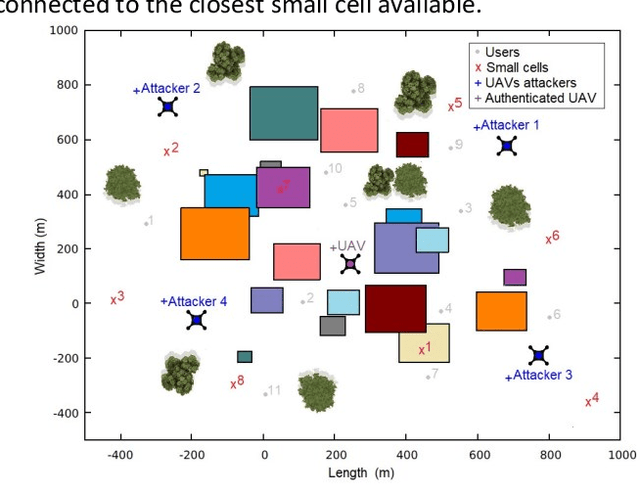
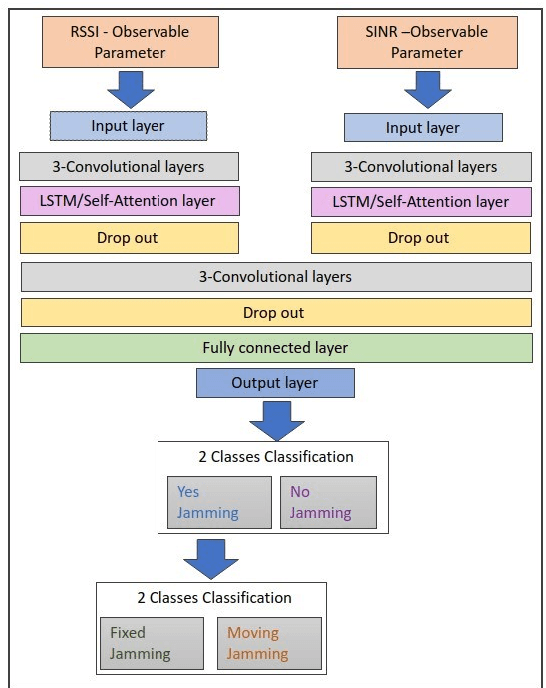
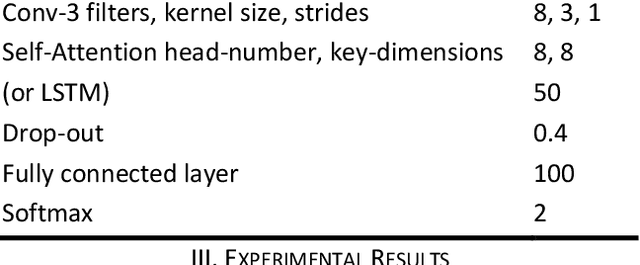
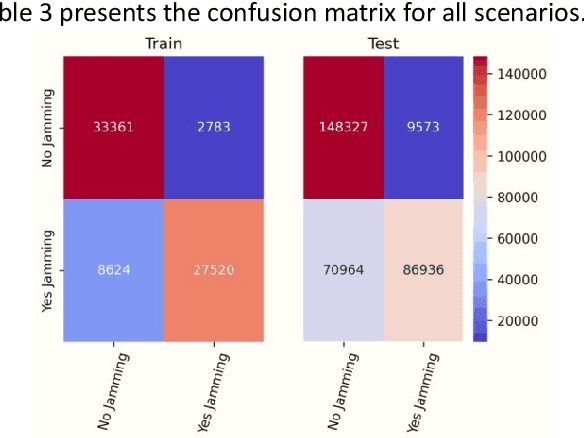
Abstract:When users exchange data with Unmanned Aerial vehicles - (UAVs) over air-to-ground (A2G) wireless communication networks, they expose the link to attacks that could increase packet loss and might disrupt connectivity. For example, in emergency deliveries, losing control information (i.e data related to the UAV control communication) might result in accidents that cause UAV destruction and damage to buildings or other elements in a city. To prevent these problems, these issues must be addressed in 5G and 6G scenarios. This research offers a deep learning (DL) approach for detecting attacks in UAVs equipped with orthogonal frequency division multiplexing (OFDM) receivers on Clustered Delay Line (CDL) channels in highly complex scenarios involving authenticated terrestrial users, as well as attackers in unknown locations. We use the two observable parameters available in 5G UAV connections: the Received Signal Strength Indicator (RSSI) and the Signal to Interference plus Noise Ratio (SINR). The prospective algorithm is generalizable regarding attack identification, which does not occur during training. Further, it can identify all the attackers in the environment with 20 terrestrial users. A deeper investigation into the timing requirements for recognizing attacks show that after training, the minimum time necessary after the attack begins is 100 ms, and the minimum attack power is 2 dBm, which is the same power that the authenticated UAV uses. Our algorithm also detects moving attackers from a distance of 500 m.
Two methods for Jamming Identification in UAVs Networks using New Synthetic Dataset
Mar 21, 2022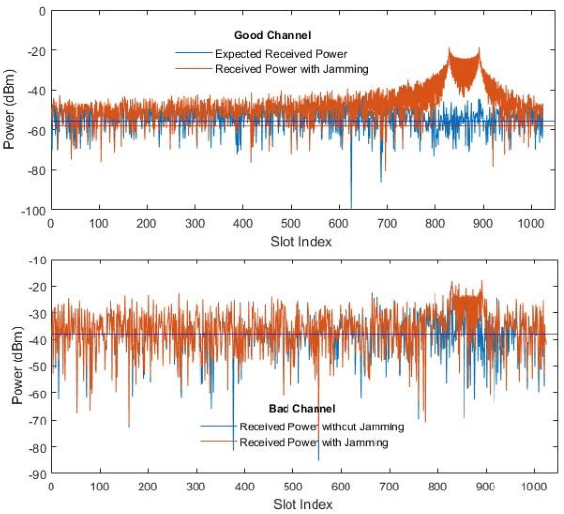
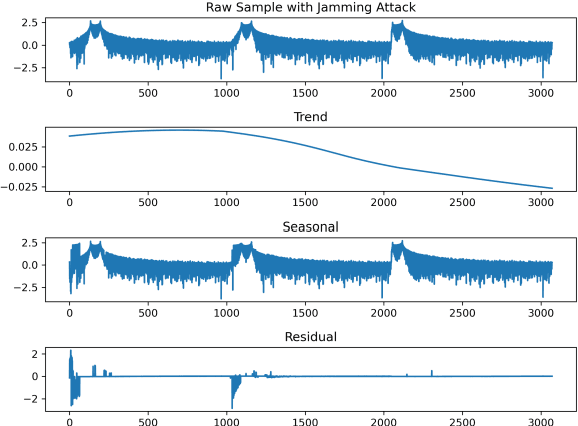
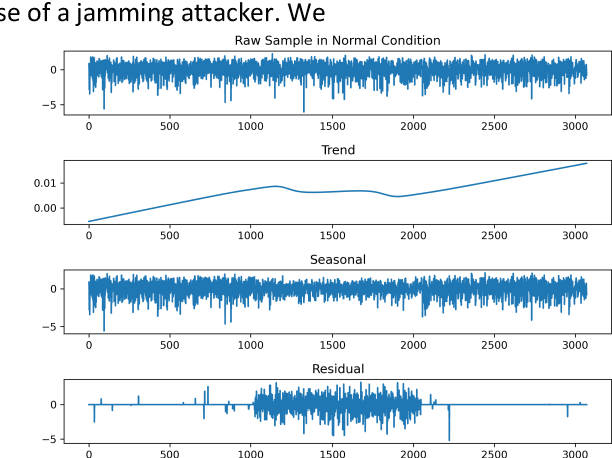
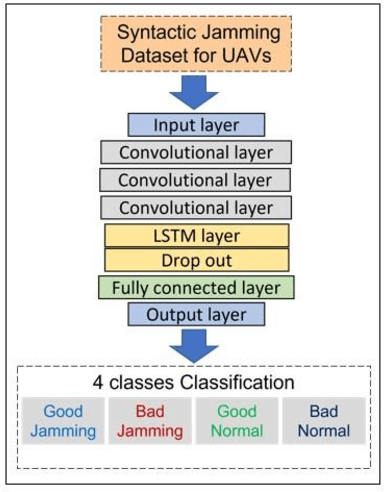
Abstract:Unmanned aerial vehicle (UAV) systems are vulnerable to jamming from self-interested users who utilize radio devices for their benefits during UAV transmissions. The vulnerability occurs due to the open nature of air-to-ground (A2G) wireless communication networks, which may enable network-wide attacks. This paper presents two strategies to identify Jammers in UAV networks. The first strategy is based on time series approaches for anomaly detection where the signal available in resource blocks are decomposed statistically to find trend, seasonality, and residues, while the second is based on newly designed deep networks. The joined technique is suitable for UAVs because the statistical model does not require heavy computation processing but is limited in generalizing possible attack's identification. On the other hand, the deep network can classify attacks accurately but requires more resources. The simulation considers the location and power of the jamming attacks and the UAV position related to the base station. The statistical method technique made it feasible to identify 84.38 % of attacks when the attacker was at 30 m from the UAV. Furthermore, the Deep network's accuracy was approximately 99.99 % for jamming powers greater than two and jammer distances less than 200 meters.
Low Complexity Hybrid Precoding Designs for Multiuser mmWave/THz Ultra Massive MIMO Systems
Jul 24, 2021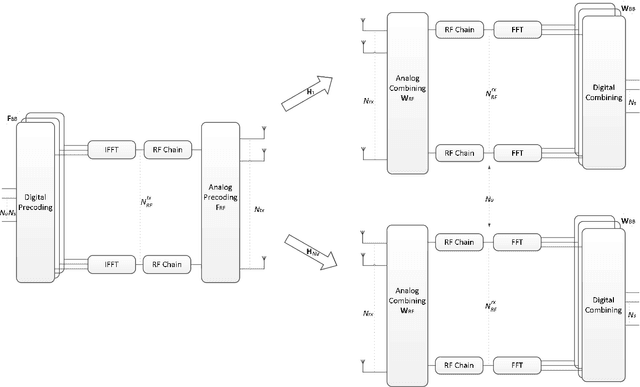
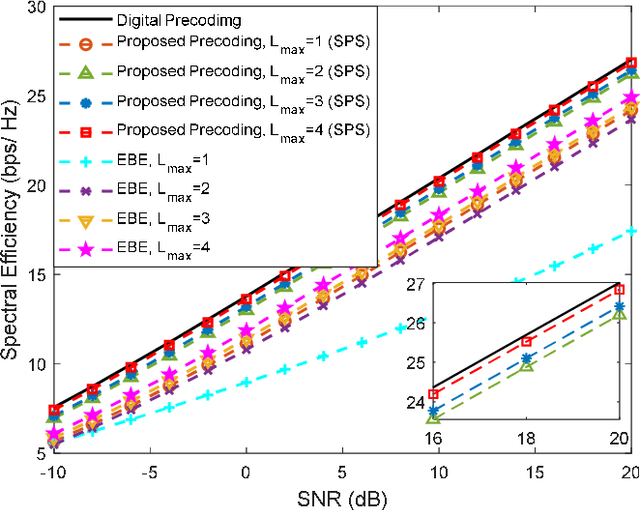
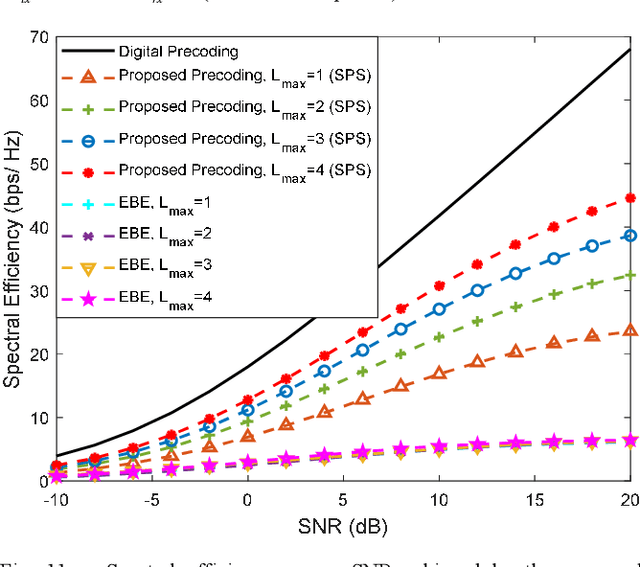
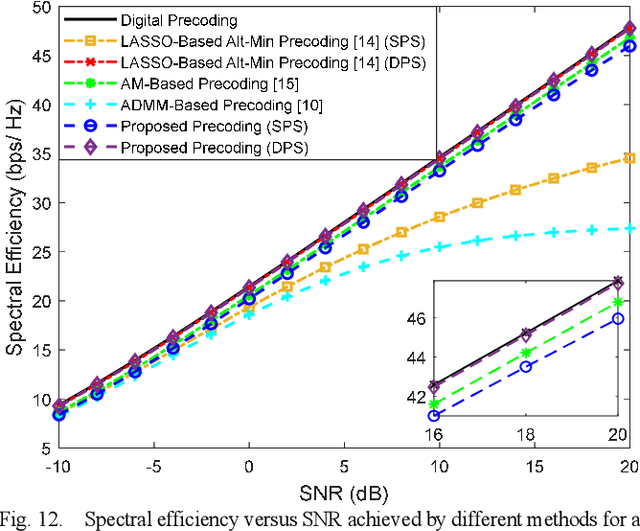
Abstract:Millimeter-wave and terahertz technologies have been attracting attention from the wireless research community since they can offer large underutilized bandwidths which can enable the support of ultra-high-speed connections in future wireless communication systems. While the high signal attenuation occurring at these frequencies requires the adoption of very large (or the so-called ultra-massive) antenna arrays, in order to accomplish low complexity and low power consumption, hybrid analog/digital designs must be adopted. In this paper we present a hybrid design algorithm suitable for both mmWave and THz multiuser multiple-input multiple-output (MIMO) systems, which comprises separate computation steps for the digital precoder, analog precoder and multiuser interference mitigation. The design can also incorporate different analog architectures such as phase shifters, switches and inverters, antenna selection and so on. Furthermore, it is also applicable for different structures namely, fully connected, arrays of subarrays (AoSA) and dynamic arrays of subarrays (DAoSA), making it suitable for the support of ultra-massive MIMO (UM-MIMO) in severely hardware constrained THz systems. We will show that, by using the proposed approach, it is possible to achieve good trade-offs between spectral efficiency and simplified implementation, even as the number of users and data streams increases.)
Joint Channel Estimation and Synchronization Techniques for Time Interleaved Block Windowed Burst OFDM
Mar 30, 2021
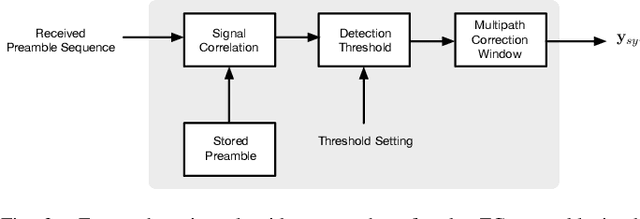
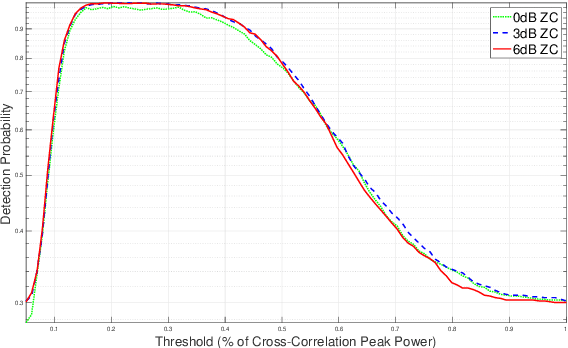
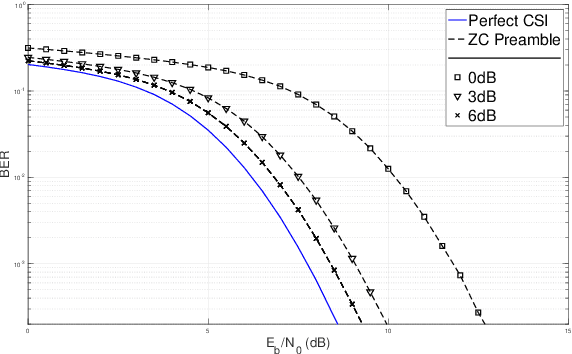
Abstract:From a conceptual perspective, 5G technology promises to deliver low latency, high data rate and more reliable connections for the next generations of communication systems. To face these demands, modulation schemes based on Orthogonal Frequency Domain Multiplexing (OFDM) can accommodate these requirements for wireless systems. On the other hand, several hybrid OFDM-based systems such as the Time-Interleaved Block Windowed Burst Orthogonal Frequency Division Multiplexing (TIBWB-OFDM) are capable of achieving even better spectral confinement and power efficiency. This paper addresses to the implementation of the TIBWB-OFDM system in a more realistic and practical wireless link scenarios by addressing the challenges of proper and reliable channel estimation and frame synchronization. We propose to incorporate a preamble formed by optimum correlation training sequences, such as the Zadoff-Chu (ZC) sequences. The added ZC preamble sequence is used to jointly estimate the frame beginning, through signal correlation strategies and a threshold decision device, and acquire the channel state information (CSI), by employing estimators based on the preamble sequence and the transmitted data. The employed receiver estimators show that it is possible to detect the TIBWB-OFDM frame beginning and provide a close BER performance comparatively to the one where the perfect channel is known.
 Add to Chrome
Add to Chrome Add to Firefox
Add to Firefox Add to Edge
Add to Edge